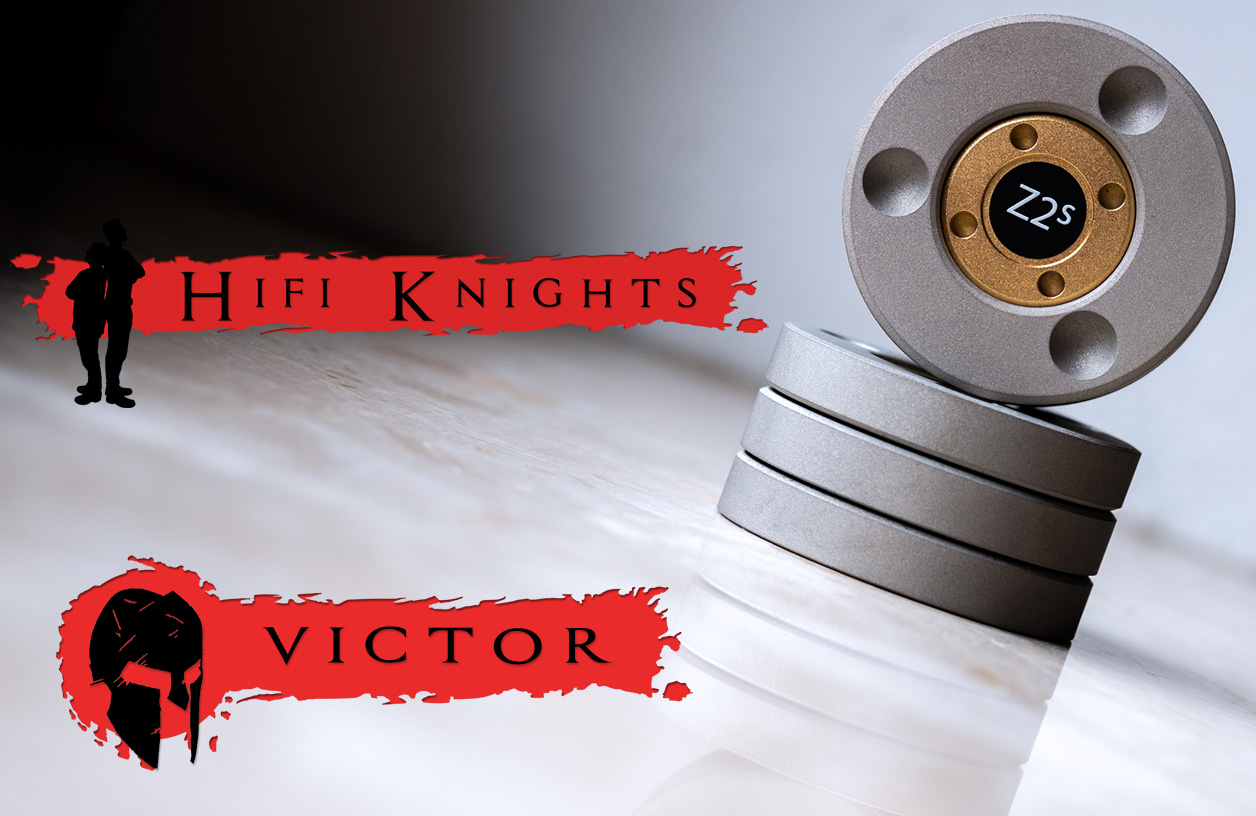Prior to the Innuos Statement's arrival, my DAC used to sit on fidata's bonnet. It seemed fond of its extra mass. That's why three of the six T2S had then landed under and above that transport and DAC. The resultant sandwich introduced yet another audible and more pronounced performance spike than the same stack had during my LessLoss Bindbreaker test. This translated into higher overall impact. My digital's ability to scale up in response was generous. Simply put, six titanium pucks did more than three. I had all the data to finish my review but trying these footers under my Vox 3afw speakers seemed appealing. I'm glad I tried. The Swiss monitors now produced bass which again struck me as deeper, more extended and tight. Its increased power secured extra points on bloom and prettiness. Higher definition packed extra punch. The severity of these reworks was my main takeaway, not their general character. Although Martin Gateley's petite speakers are off-the-charts performers in their own right, without the Danish titanium footers their bass was noticeably less impressive. On some tracks, the Bakoon had routinely shown their vocals on the verge of being a touch too outlined, shiny and lean. With T2S this tendency was banished. Vocals were noticeably smoother and more substantial.

Since T2S had done an awful lot regardless of application; and since back then I wasn't aware of anything better… that review should have ended in an award. It didn't because I'd never sampled similar accessories so costly before hence had no notion on where the ceiling was. Now I know. It's quite silly how much more these latest footers do. Although my Darkz T2S experience was intense already, anything in the Danish portfolio thus far had always shown the biggest performance leap when upgrading from their second best to their very best. Now Z2S made that point again by being a substantially superior performer than the previous range topper.
For simplicity's sake, let's stress that T2S's key strengths had been quickness, openness, background blackness, clarity and spatial cleanliness. In toto, they injected generous hi-res flavor into any component I sat atop them. A set of Darkz Z2S did the same just more pronounced. Then it escalated by significantly boosting saturation, mass and spatial presence. That resulted in higher aural intensity. The greater surprise was simply how different today's set was at its core. Even if prior to delivery I was subconsciously ready to expect a little improvement, several AB registered heavyweight remodels I hadn't seen coming. To be fair, I don't think anyone familiar with Ansuz accessories would have, either. Manufacturers often stick to a house sound. That remains uniform regardless of price. On that score Z2S was a proper Ansuz by clearly showing off the traits its makers cherish. But it also veered in a new direction which zirconium apparently unlocked just now.

To keep expectation bias at bay, I like to listen first, ask questions later. Once I had a firm notion on how zirconium fared against titanium or rather, how it differed, it was time to make calls. Morten suggested that I talk directly to Michael Børresen. He happily explained their latest material of choice then casually mentioned that it and titanium don't sound alike. With first comparative auditions under my belt already, I knew this to be the case so was in the same boat. The difference between the sets was too obvious and marked to have doubts about which did more. Although it might imply two profiles aimed at different system tunings, I didn't hear it that way. On tracks which unmasked T2S as primarily lean and agile, its successor felt heftier but no slower, dimmer or portlier. All occasions for the former to dig deep, go tight and powerful the latter used to go still deeper and present more muscular to slam even harder. If titanium knew how to move air, present radiance and extend decays, zirconium showed even longer weightier shimmers then refined the entire brilliance region. T2S's spatial render was pinpoint accurate, superbly separated and vivid. Z2S made images a touch thicker yet internally far moister and fleshier. That hit higher notes on presence and tactile feel. Titanium did everything a product this costly should. Newcomer zirconium made the music still noticeably more alive and physical. I couldn't single out one count where titanium beat zirconium or even managed to reach on par. Yes I prefer titanium's looks but in this context that's utterly irrelevant.

Witnessing how much these two Darkz differed was a treat but Z2S's far higher overall efficacy was obvious to a degree I hadn't expected. This extremely costly proposition is for those lucky few who live in capacious mansions, who view such expenses as casual fun and spare no coin to get the very best of everything. It surpassed its titanium sibling by a significant margin and combined mutually exclusive traits so denser yet highly individuated imaging then had an unusually potent impact on my hardware. Along with wrapping my head around these advantages, I realized just how to properly sign off on this story. I can't name another decoupling footer whose performance would come anywhere close to our Danes' latest zirconium effort; not even their own titanium versions. It represents the new very high ceiling. And that now deserves an award!